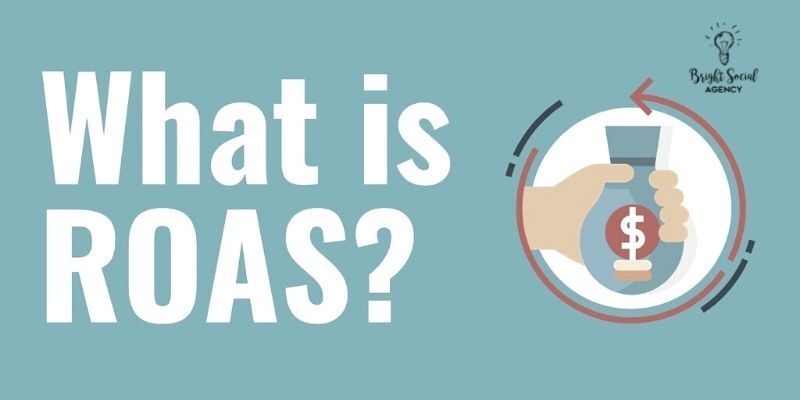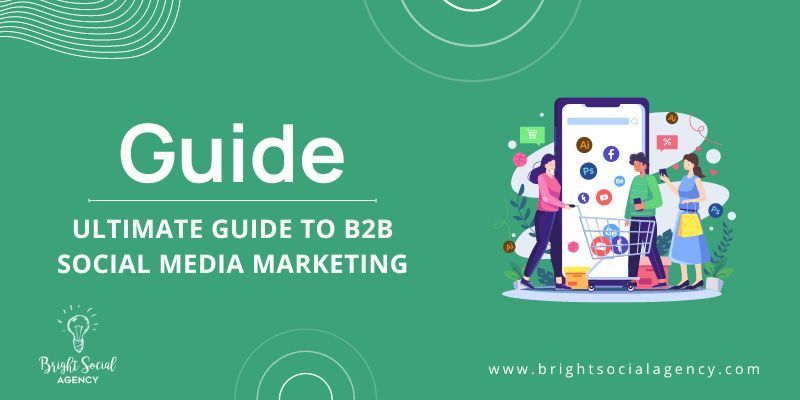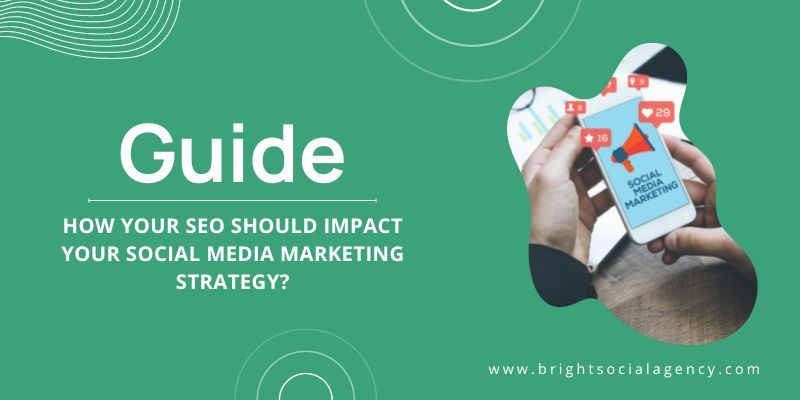10 Fast And Simple Tactics To Improve Your ROAs!
Digital managers are always looking to spend their ad dollars more efficiently. As budget are decreasing day by day, and the competition for customers has never been higher. As advertisers, we all know that staying competitive means improving performance while keeping the ad budget as lean and effective as possible. In other word, we all need to boost ROAs.
In this blog, TechNinjaPro will provide the 10 fast and simple tactics to boost your ROAs.
Understanding Return On Ad Spend (ROAS)

ROAs (Return on ad spend) is a ratio representing how much revenue you gain for each dollar you spend on ads. It also offers a clear understanding of whether a campaign is worth the money you spend into it. The formula of calculating ROAs is pretty simple: revenue driven by the campaign divided by the cost of running the ad campaign.
Suppose you spend $1000 on an ad campaign in one month. During that time, your ad campaign drove $5000 in revenue. In this situation, your return on ad spend is 5:1; in other words, you gain $5 in revenue for every dollar you spend on that ad campaign.
One important note is that Return on Ad Spend is not return on investment which takes into account profit margins and other expenses beyond the amount of money you plugged into the ad campaign. ROAs measures the success of certain recipes while ROI measures the success of the overall campaign strategy.
Why is ROAS Important Today?

The reason why ROAS is important today is because it gives you insight into whether or not your campaigns are producing positive results for your business. If your ROAS is low, then you'll know that something needs to change with your strategy.
You can use this information to evaluate which aspects of your brand strategy need to be improved upon, as well as what steps you should take in order to improve them. Return on ad spend is a critical factor in determining the overall health of your business, and one that venture capitalists frequently use to determine whether or not to fund a company.
For every dollar you spend on ad campaigns, are you getting a dollar (or more) back in sales?
ROAs can help you justify maintaining or even increasing your advertising spending during challenging economic times.
What Is A Good ROAS?

The ROAS you generate depends on many factors, including your technology stack, profit margin, overall business health and more. The general rule is that a 4:1 return on ad spend (ROAS) is a good benchmark.
The 4:1 ratio means you are turning a profit. The 3:1 ratio likely means you're breaking even, but the business has not yet paid for itself. A 2:1 ratio and below means you're losing money.
The life-cycle of your business has a huge impact on the return-on-ad-spend (ROAS) you need. If you're a cash-strapped startup, you probably want the most bang for your buck. If you're an established, healthy business, you may be willing to settle for a lower ROAS in exchange for increased brand awareness.
You can use a few tried-and-tested strategies to keep your return on ad spend (ROAS) steady in the short term, while helping you reap the benefits in the long term.
Before we get into increasing ROAS, there are a few considerations to keep in mind:
- Every Channel is Different: Each ad campaign channel delivers a different ROAs ratio. For example, some sources say 4:1 is a good ROAs ratio for Facebook and other digital platforms, while other tout as a typical results on Google ads. It is completely up to you to balance the marketing mixture for optimal spending and long-term loyalty.
- Every Business is Different: ROAs varies between businesses, depending on a long list of factors like audience size, goals, market and more.
- ROAs is Not ROI: ROAs can be viewed as a sub-metric of ROI if the marketing mixture includes organic and activity. Return on Ad Spend complements other metrics like CPC and AOV.
- ROAs is Multi-Layered: ROAS ratios are based on last-touch attribution. Measuring returns at the channel and campaign levels helps you better understand how your marketing budget is performing, allowing you to optimize your investments to increase ROAS.
The Secret To Improving Your ROAS Performance

Improving your Return on Ad Spend is a matter of breaking down the equation into its underlying components and creating efficiencies at each step.
When you break online ad revenue down into its component parts, it consists of:
- Post-click conversions
- Online ad clicks
- Revenue per conversion
If you pay $1.96 per click and get a 4% conversion rate, it takes you 25 clicks to get a single conversion. If each conversion costs you $49 and your average order value is less than $49, then your campaign isn’t likely to be profitable. You’d want to see an average order value of at least two to four times that amount.
How to Increase Return On Ad Spend?

Coming up with the right digital marketing strategy can be difficult. If you want to improve your return on ad spend (ROAS), though, it’s crucial that you carefully plan out how you use your money and where your ads appear. This blog will give you 10 tested tips for improving ROAS by focusing on key areas of digital marketing such as frequency capping, creative optimization and more!
1. Decrease frequency
Frequency capping is important because it ensures that users do not get annoyed by your ads. If you don’t use frequency capping, then you risk losing the trust of users who see your ads too often.
Frequency capping is also one of the most effective ways to increase ROAS (return on ad spend). By increasing ROAS, you can make more money from each campaign and boost your profits. This will help you grow your business and ensure its sustainability into the future!
2. Re-target your top performers
So, how can you re-target your top performers?
The first step is to build a retargeting list. You can do this by exporting your Facebook Custom Audiences into an excel file, categorizing them and then uploading that file as an audience on Facebook or Instagram. You can also build a retargeting list through Google AdWords and LinkedIn. With either method, you'll want to use the same targeting parameters when creating a retargeting list for each platform so that everything stays consistent across all channels and platforms.
Next up: take note of what content has been performing well for you in the past month or so—that's what we're looking for! This could be an article about how to bake cookies using only one bowl (true story), or perhaps it's an infographic about why fur should never be worn again (#justiceforanimals). Whatever it is, write down some titles and URLs from posts/pages that have performed well since January 1st (or whatever date range works best with your business).
Now add those to appropriate ad groups in Facebook Ads Manager (or another similar tool) and set up some bids based off percentage of audience size or cost per acquisition goals ("monthly CPA" goals are ideal here!). By setting these bids at low levels initially (1%-5%), you'll be able to see if there's any interest before spending too much money on unproven ads."
New Title
3. Truthfully assess your conversions
The first step to increasing return on ad spend is understanding exactly how your ads perform.
This can be a challenge, as it’s difficult to determine whether or not an ad is effective without tracking conversions. A conversion could be purchasing a product or service, signing up for an email list, watching a video, downloading an eBook - the possibilities are endless.
It’s important to note here that there are two types of conversions: last-click and assisted. Last-click means the conversion took place after clicking on the ad; assisted means it was from another touchpoint before clicking on the ad (i.e., seeing another tweet about it). Suppose you aren't tracking both types of conversions in addition to measuring overall page views and time spent on page/site.
In that case, you're missing out on vital information about how many people actually see your ads before deciding whether or not they want what you're selling!
4. Don’t be stingy with your money keywords
You should choose your keywords wisely. For example, let’s say that you run a chain of restaurants and want to target keywords related to food. You could use broad terms like “restaurant” or “food,” which could allow you to reach customers who may be interested in other types of dining experiences (like fine dining or fast food). Or you could use more specific terms like “pizza restaurant,” “Italian restaurant,” or even just “pizza.” Each keyword has its own benefits and drawbacks—the decision is up to you!
If your business targets local customers, using geographic information in your ads will help them show up when people near their physical locations do relevant searches. Using location extensions also allows users to see whether they can get directions from the ad itself—a great way for businesses with physical locations (such as restaurants) to drive foot traffic!
5. Create a small but effective budget
Once the budget is set, it’s time to figure out how much you spend on advertising.
A good rule of thumb is to spend a little more than you make in sales. So if your average order value is $500 and 10% return on ad spend (ROAS), then you should spend $50/month on Google AdWords to earn back at least 10% of that cost from one customer. This ensures that your ads are profitable and don’t cause any damage to the business by creating negative ROI for each click or impression made by the advertising campaign.
6. Get to know your audience better
Knowing your audience is another step to making ROAS work in your favor. Knowing your audience's demographics, psychographics, and behavior will help you create better ads and landing pages that resonate with them. It’s also essential to ensure they clearly understand what they should expect from you once they click on an ad—this can be done by creating content around the benefits of doing business with you (or whatever it is that makes you different).
This information can then create targeted offers relevant to each person, improving conversion rates and increasing customer lifetime value (LTV).
7. Craft more enticing ad copy
When crafting ad copy, there are a lot of things to keep in mind. Advertisers have been spending time and money on the art of copywriting for decades, and their insights can help you create more compelling ads that get better results.
One thing to avoid when writing ad copy is being too generic or vague. Generic ads won't invoke any emotional response from your readers; they'll simply be something they read on their way through Facebook without much thought or effort put into it by either party involved in the transaction (you or them). Vague ads don't give enough information about what you're selling so consumers will have difficulty deciding if they want to buy your products/services or not; this is especially true if the product/service itself isn't well-known yet (for example, if you're launching a new website).
Another thing not worth doing when crafting ad copy is being too salesy: no one likes being sold something all day long! This goes double for social media users who spend most of their time scrolling past ads anyway—they don't need any encouragement beyond seeing what kind of message you're sending out there already before deciding whether or not it's worth engaging with further than just skimming over headlines briefly every now and again.
8. Use countdown timers in ads
With so many choices to make when it comes to marketing, you want to make sure your ads are getting the most bang for their buck. A countdown timer is a great way to create urgency around a product or service and can help increase ROAS (return on ad spend).
Here's how this works: When someone sees an ad with a countdown timer, they instantly know that if they don't click on it immediately, they will miss out on whatever deal or the company is offering offer. This triggers an emotional reaction in the brain that makes people want what they see even more than if there was no countdown timer at all.
In addition to increasing ROAS, countdown timers can also increase CTRs (click-through rates) because of their ability to generate curiosity about what's happening when the clock runs out — leading them down another path where they might be more likely to convert into customers after clicking through multiple pages of content before making a purchase decision.
9. Build a remarketing list for search ads (RLSA)
If you haven't heard of RLSA, it's a great tool to use in your AdWords account. It allows you to show ads to people who have visited your website or used keywords related to your business. This is a fantastic way to increase ROAS because you're targeting people who've already shown interest in your product or service!
10. A/B test your ad groups with ease
AB testing is a great way to improve your ROAS. It’s easy to do and can be accomplished with the help of a tool like Optimizely (which has its own AB testing platform built-in).
Let’s say you want to find out which ad group performs better: one with only one product per ad or two products per ad. You could simply create two separate ad groups, each containing one product, then split test them by showing one of the ads but not the other over time. Another option would be using an A/B test between two different sets of keywords where one set has 2 keywords, and another has 3 keywords.
How Do I Define Good ROAS for My PPC Campaigns?

If you're a business owner, you probably know that ROAS stands for return on ad spend. But do you know what good ROAS means? And how do you define it for your PPC campaigns?
Let's start with the basics: ROAS is the ratio of money spent on advertising to revenue generated by that advertising. So if an ad costs $50,000 and brings in $100,000 in revenue, then the ROAS is 2x. If the ad only brings in $50k in revenue, then it has a 0x ROAS.
The best way to calculate ROAS is by using custom reports in Google Analytics or Salesforce.com (if your business uses that platform). You can also look at your financials and determine how much profit each campaign is generating for your business as a whole. That's not as accurate as using custom reports from Google Analytics or Salesforce.com, but it will give you an idea of whether or not certain campaigns are bringing in more money than they cost to run!
As you might guess, the return on ad spend (ROAS) depends on many factors and is different for different companies. The ROAS is also influenced by profit margins, operating expenses, and the overall health of your business.
For example, if you run a startup with a limited budget and need to achieve higher margins (e.g., a 10:1 ROAS), you may need to focus on getting more customers for your product. This suggests that a company with more resources to invest in growth may be able to afford higher advertising costs—i.e., lower ROAS, such as 3:1.
While a “good” ROAS—or return on ad spend—can range from 3 to 8, a common benchmark is a 4:1 ratio, $4 in revenue per $1 in ad spend.
Is ROAs more important than click-through rate?

Apples and oranges are as different as night and day.
Calculating your return on ad spend (ROAS) gives you a more definite answer as to whether or not your campaign made you money.
Click-through rates tell you whether your copy, creatives and calls to action encouraged your audience to click on your ads. The click-through rate does not measure whether or not users became paying customers after clicking on an advertisement.
When ROAS and CTR are considered together, they provide a comprehensive picture of your ad campaign’s performance. And so, it is impossible to think of one as being better than the other. Each metric has its own advantages and disadvantages.
For example, if your CTR is high (say, over 9,000 clicks) but your ROAS is around 2:1, then you know that your audience is interested in what you have to offer, but they are not converting at a satisfactory rate. If you want to increase your click-through rate, you should look at the quality of your landing page, ad relevance and targeting.
Should I track ROAS over conversion rate?

It's not a good idea to "prefer" one metric over the other since each has its own purpose and meaning. A conversion happens when your audience takes the action you want them to take. This doesn't necessarily have to be a purchase.
For example, you may create an ad campaign that directs visitors to a landing page offering a free eBook. If your conversion rate is 10%, how much more money are you leaving on the table?
You need to track return on ad spend (ROAS) in order to know whether your marketing efforts are profitable. While free downloads or email signups might not bring in revenue right away, users who take these actions might become paying customers later.
Thus, the best approach is to use both metrics.
Final Verdict
For the ultimate ROAS, you should test and optimize at every stage of the advertising funnel.
By creating precise ad campaigns and providing a personalized post-click experience, you can significantly improve your ROAS.
To ensure the success of online paid advertising campaigns, merchants need to set a solid return on ad spend goal, define their budget and get a firm handle on profit margins.
Ready to take your company to the next level? Contact Bright Social Agency for help with improving your ROAS.
This post may contain affiliate links, which means that we may receive a commission if you make a purchase using these links.

ABOUT BRIGHT SOCIAL AGENCY
We serve clients of every size and in diverse verticals. From clothing stores to non-profit companies - and everything in between - we customize our marketing strategy to your dreams, budget, goals, and culture. Our goal is to ensure that you achieve yours.








